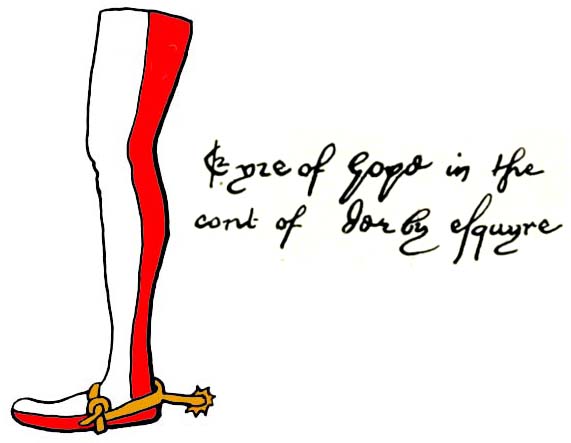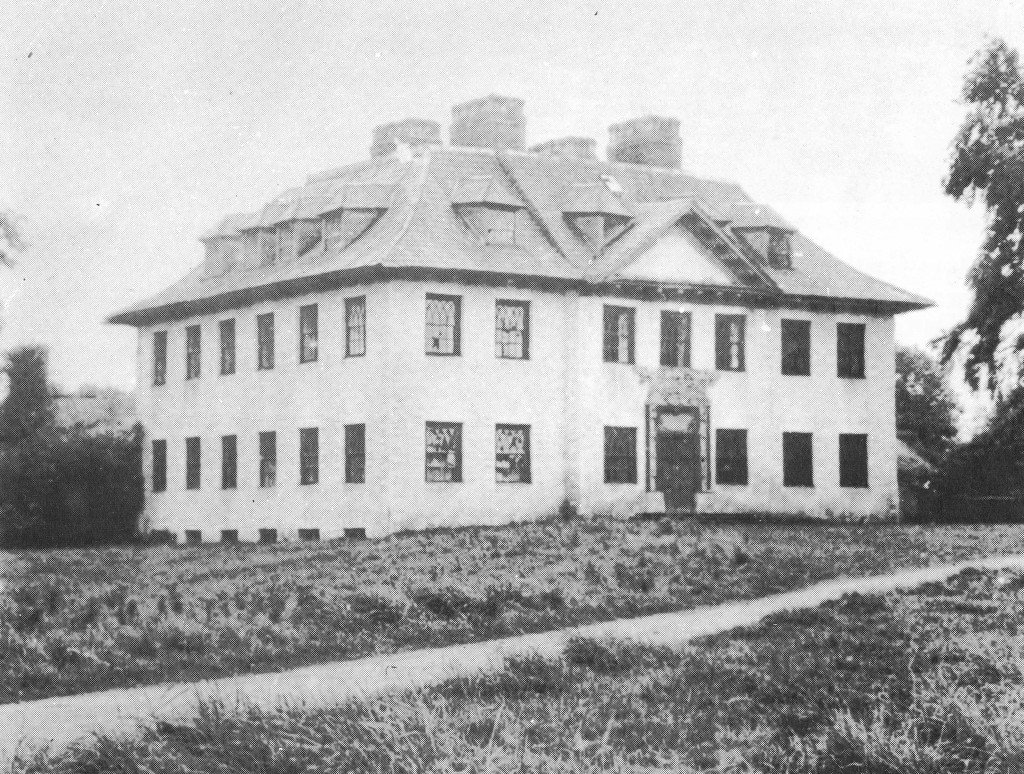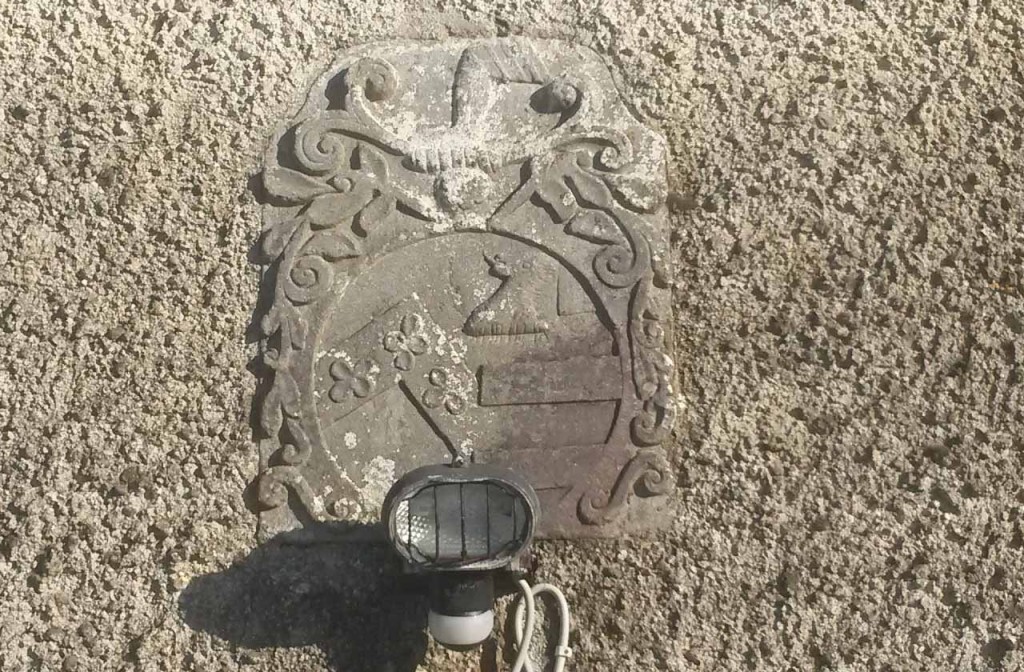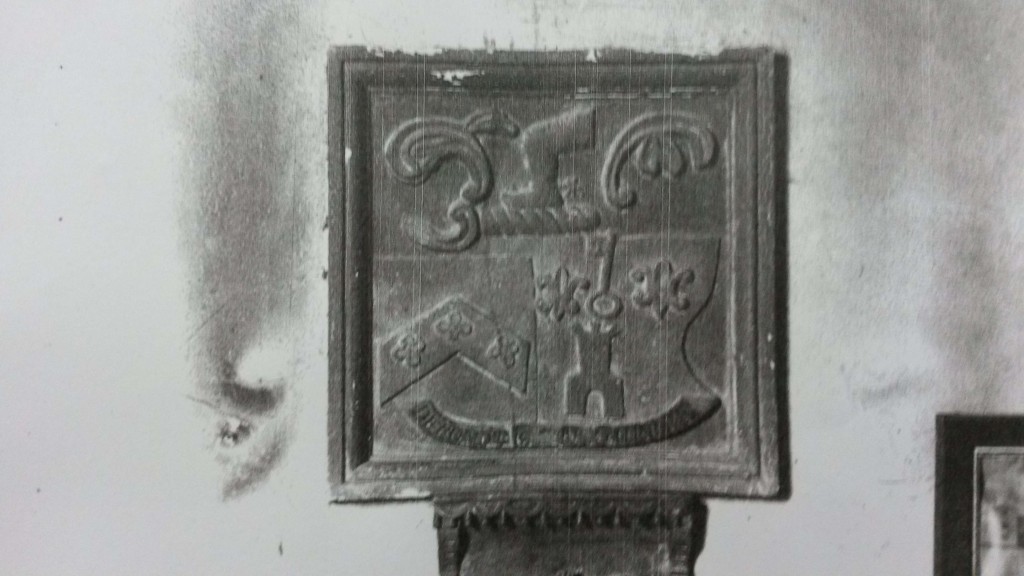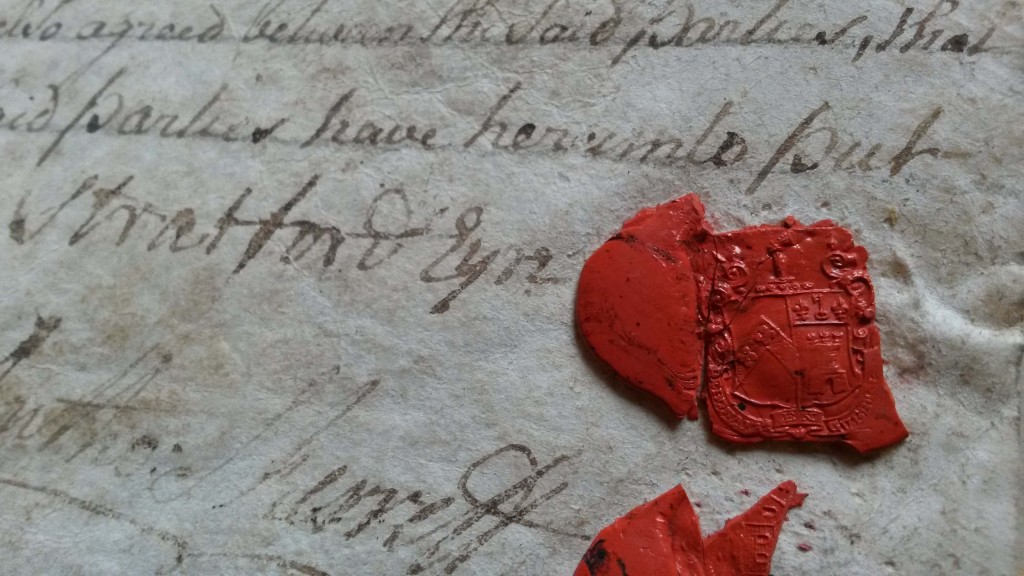© Donal G. Burke 2016
Two younger sons of Giles Eyre of Brickworth in Wiltshire established themselves in Ireland during the Cromwellian period in the mid seventeenth century; Captain John Eyre and Edward Eyre. From John Eyre descended the Eyre family of Eyrecourt Castle in the east of County Galway, while Edward settled in the town of Galway and from him descended another Eyre family.
William le Eyre of Hope, Derbyshire in England is among the earliest of the name whose arms were recorded. In the reign of King Henry III he bore for arms ‘Argent on a chevron Sable three quatrefoyles Or.’[i] The same arms were borne by the Eyre family of Bromham, Wedhampton, Chalford, New Sarum, Brickworth, Chilhampton, Newhouse, etc. of Wiltshire in England, all of who were descended from Humphrey le Heyr of Bromham, whose great-grandson Godfridus le Eyr of Bromham flourished during the reign of King Edward II. The senior line of this family, according to Sir Bernard Burke, bore the same shield as William le Eyre and for crest, ‘on a cap of maintenance Proper, a booted and armed leg, couped at the thigh quarterly Argent and Sable, spurred Or.’ The same leg on occasion was shown, rather than quarterly, ‘per pale Argent and Gules.’ For motto ‘Virtus sola invicta.’[ii]
A tradition repeated within the family held that an ancestor fought alongside William the Conqueror, Duke of Normandy, at Hastings in 1066 and that, in acknowledgement of a service rendered unto the Duke at the battle by this ancestor and noting that the latter’s leg and thigh having been struck off in the battle, in addition to lands for his services, the Duke designated that a leg in armour couped at the thigh thereafter be his crest and that of his descendants.[iii] The later application of romantic origins to arms and crests was not uncommon and that this is a later construction may be evidenced from the lack of any developed heraldry at the time of Hastings and the even later use of crests as hereditary elements in heraldry.
From the standard of ‘Eyre of Hope in the county of Derby, Esquire’; an armed leg parted white and red, having a golden spur. Arthur Eyr ‘enterying into Fraunce xvi June, v Henry VIII’ (1513) was described as bearing on his standard ‘vert, a leg or botte sylver and golls partie per pale with spur upon the helle gold.’ For arms he bore quarterly 1 and 4, Argent, on a chevron Sable three quatrefoils Or, 2 and 3, Argent, 3 barnacles closed Sable. (Banners, Standards and Badges from a Tudor Manuscript in the College of Arms, The de Walden Library, 1904, p. 122.)
The funeral entry noting the death in 1685 of John Eyre of Eyrecourt, founder of the Eyrecourt line, was recorded in the office of the Ulster King of Arms and gave him as a younger son of Giles Eyre of Brickworth and his wife Jane Snellgrove, and, as such, a descendant of the Eyres of Wedhampton and Northcombe and later of New Sarum in Wiltshire. This John Eyre likewise bore ‘Argent on a chevron Sable three quatrefoyles Or’, with a crest of ‘a leg in armour couped at the thigh Proper, garnished and spurred Or’ and for motto ‘Pro rege saepe, pro patria semper’, translating as ‘for king often, for country always.’
This Captain John Eyre of Eyrecourt married Mary, daughter of Phillip Bigoe of Newtown in Lusmagh, an established Protestant settler and proprietor of a glass factory, and had constructed a mansion to be known as Eyrecourt Castle as the focus of his new estate in east Galway. While Ms. Ida Gantz in her ‘Signpost to Eyrecourt’ described the painted arms displayed in the central section of the elaborate timber staircase in the entrance hall of Eyrecourt Castle as the arms of Eyre quartered with those of Bigoe, the surviving black and white photographs of the interior show these arms impaled rather than quartered. This would imply that the arms so displayed were those of the particular Eyre who was married to the representative of the family whose arms were displayed on the sinister half of the shield. Both impaled arms, those of Eyre and Bigoe, appear sufficiently distinct on the same photographs, taken about the early twentieth century, to identify the arms as those of Captain John Eyre, following his marriage to Mary Bigoe.[iv] A chevron dominated the arms of both families, with those of Bigoe of Newtown being ‘Azure, on a chevron between two mullets in chief and a ferret passant in base Argent, a mullet between two ferrets passant Gules.[v]
Eyrecourt Castle
Arms of Captain John Eyre of Eyrecourt (d. 1685) displaying the arms of Eyre impaled with Bigoe, after the representation of the same arms carved above the staircase in the entrance hall of Eyrecourt Castle.
Captain John Eyre of Eyrecourt had by his wife Mary Bigoe six children, two of whom; Rowland and Katherin had died young and unmarried in their father’s lifetime. He was survived by his widow and two sons and two daughters; John, Samuel, Mary and Anne. At his death on 22nd April 1685 his eldest three children were married while Anne, the youngest daughter, later married Richard St. George, son of Sir George St. George of Dunmore in County Galway. Anne died in 1719 and was buried ‘with scocheons’ on 27th November of that year at Christchurch Cathedral in Dublin. Her Funeral Entry, which recorded her paternal arms on the sinister side, impaled with those of her husband’s on the dexter, described her as ‘Mrs. Eyre, wife to Col: St. George.’
The impaled arms of Anne Eyre who died in 1719, daughter of Captain John Eyre, and wife of Richard St. George, representing those displayed at her funeral and recorded in the Office of the Ulster King of Arms. (N.L.I., Dublin, G.O. Ms. 79 Funeral Entries 1619-1729, p. 248.)
While from Samuel Eyre descended the Eyre family of Eyreville, Kiltormer in the east of County Galway, the senior line of Eyrecourt descended from John, the eldest son of Captain John Eyre. John married Margery, daughter and co-heir of Sir George Preston of Craigmiller in Scotland succeeded to the Eyrecourt estates. He died in 1709 and was succeeded by his son George, who only survived his father by two years and was in turn succeeded by his younger brother John. This John had at least two sons; John and Giles and died in 1741. John died four years later without a male heir and the estates passed to his brother V. Rev. Giles Eyre, Dean of Killaloe.
One of the earliest armorial bearings of a member of the Eyre family to survive in East Galway are those found displayed on a mid eighteenth century stone tablet showing the impaled arms of V. Rev. Giles Eyre and his wife Mary, daughter of Richard Cox, eldest son of one Sir Richard Cox, baronet and a granddaughter of Sir Richard Cox of Dunmanway, one time Lord Chancellor of Ireland. The armorial stone was placed above the entrance door of a two storied house at Cloonkea in the parish of Clonfert, not distant from Eyrecourt and as the house would appear to date from the early decades of the nineteenth century, pre-dates the house. Giles Eyre was said to have lived at Eyrecourt Castle prior to his succeeding to the property but the origin of the stone is uncertain. Mary Cox died in 1740 and was survived by her husband and at least two sons; John and Richard, the elder of whom was later created Baron Eyre of Eyrecourt.
Cloonkea, two and a half miles east of Eyrecourt Castle, in the parish of Clonfert
The armorial stone at Cloonkea bearing the impaled arms of Eyre with those of Cox of Dunmanway. The arms arms were blazoned ‘Or, three bars Azure, on a canton Gules a lion’s head erased Argent.’ Local tradition described Cloonkea having been at one time a dower house of the Eyres of Eyrecourt and while the arms are displayed on a circular form rather than a shield and without a helmet below the crest, it is likely that the arms are those of V. Rev. Giles Eyre as opposed to those of his wife, given that he survived his wife and died in 1757. The stone was partly obscured from view in the late twentieth century by an external light placed above the entrance door of the house.
Early armigers of the Eyres of Eyreville
The junior line of the Eyres of Eyreville (also known as Newtown Eyre) in the parish of Kiltormer, County Galway, descended from Samuel of Newtown, second son of John Eyre and Mary Bigoe of Eyrecourt. Although descended of a second son, there is no evidence of the Eyreville branch differentiating their arms from those of Eyrecourt across succeeding generations in the eighteenth or nineteenth centuries by the use of a crescent, the cadency mark of the second son.
A photograph exhibited at an auction of items relating to Eyreville held in February of 2016 provides evidence of the existence of another mid-eighteenth century Eyre armorial tablet which is a near contemporary of the Cloonkea tablet. The photograph dates from the twentieth century and shows the arms of an Eyre armiger impaled with those of his wife’s paternal arms. The tablet at that time was embedded in the wall above a mantelpiece at Eyreville. The arms are those of Stratford Eyre of Newtown, one-time Governor of Galway and Vice-Admiral of Munster and the arms displayed on the sinister side of his arms are the paternal arms of his first wife Mary Dartiquenave. His wife’s arms appear Continental in composition, corresponding with her having been the daughter of Charles Dartiquenave, a courtier and bon-vivant of obscure origin who held the office of Paymaster of the Royal Works from 1706 to 1726 and thereafter Surveyor-General of the King’s Gardens. Eyre married Mary Dartiquenave in October 1735 which dates the tablet from that date or about the mid-eighteenth century.
Detail of a photograph of the armorial tablet bearing the impaled arms of Governor Stratford Eyre of Eyreville.
Engraved image of Charles Dartiquenave, Esq., showing his arms below, by John Faber, jr. after the portrait by Sir Godfrey Kneller, Bt.. © National Portrait Gallery, London.
The arms of Charles Dartiquenave, Esquire, of Westminster were given in a 1749 publication as ‘Argent a castle triple-towered Gules on a chief Azure a key Or between two fleur-delis Argent’. Mary Eyre alias Dartiquenave died in or before 1762 as in that year he married secondly Mary, widow of James Echlin. Eyre continued to use the impaled arms of his first marriage for some time subsequent to his first wife’s death as those same arms occur on a seal affixed by Stratford Eyre to an indenture dated October 1764 relating to property about Eyreville to which he and Anthony Skerrett of Drumgriffin in County Galway were party. Both Stratford Eyre’s seal and the Eyreville tablet gave his motto as ‘Debonnaire en guerre’.
Signature and armorial seal of Stratford Eyre from an indenture relating to property about Eyreville dated 12th October 1764 and showing the impaled arms of Eyre and Dartiquenave.
Armorial seal of Stratford Eyre affixed to the Indenture dated 12th October 1764 to which both he and Anthony Skerrett of Drumgriffin were party.
Stratford Eyre died suddenly at the Levée at Dublin castle in November 1767. He had a number of illegitimate sons but was not survived by a legitimate son and his estates passed to his brother Col. Thomas Eyre M.P., sometime Surveyor-General of Ireland and later Chief Engineer of the Ordnance. Upon the latter’s death without a son in 1772 Eyreville and the family estate was inherited by their nephew Samuel, eldest son of their half-brother John Eyre.
John, Baron Eyre of Eyrecourt
Subsequent to the advancement to the peerage in 1768 of John Eyre of Eyrecourt as Lord Eyre, the senior-most surviving representative and great great-grandson of the first John Eyre in Ireland, this individual came to bear the same arms, crest and motto but with supporters of a peer, being; ‘dexter, a woman Proper vested Gules, on her head a helmet and in her dexter hand a spear, resting her sinister hand on an oval shield, all also Proper, the shield charged with a Gorgon’s head Or; sinister, a savage man girt about the lions and holding a club, all Proper, charged on the sinister breast with a quatrefoyle Or.’[vi]
Continued at Part II
[i] Foster, J., Feudal Coats of Arms, James Parker & Company, London, 1902.
[ii] Burke, Sir B., A General Armory of England, Scotland, Ireland and Wales.
[iii] Hartigan, A.S., A short account of the family of Eyre of Eyrecourt and Eyre of Eyreville in the County of Galway, Dublin, 1904.
[iv] O Connell, J. and Loeber, R., Eyrecourt Castle, Co. Galway, The GPA Irish Arts Review Yearbook 1988, Eton Enterprises Ltd. for A. Reihill and B. de Breffny, Belfast, 1988, pp. 40-48.
[v] N.L.I., Dublin, G.O. Ms. 67 Funeral Entries, p. 114.
[vi] Burke, Sir B., A General Armory of England, Scotland, Ireland and Wales.


